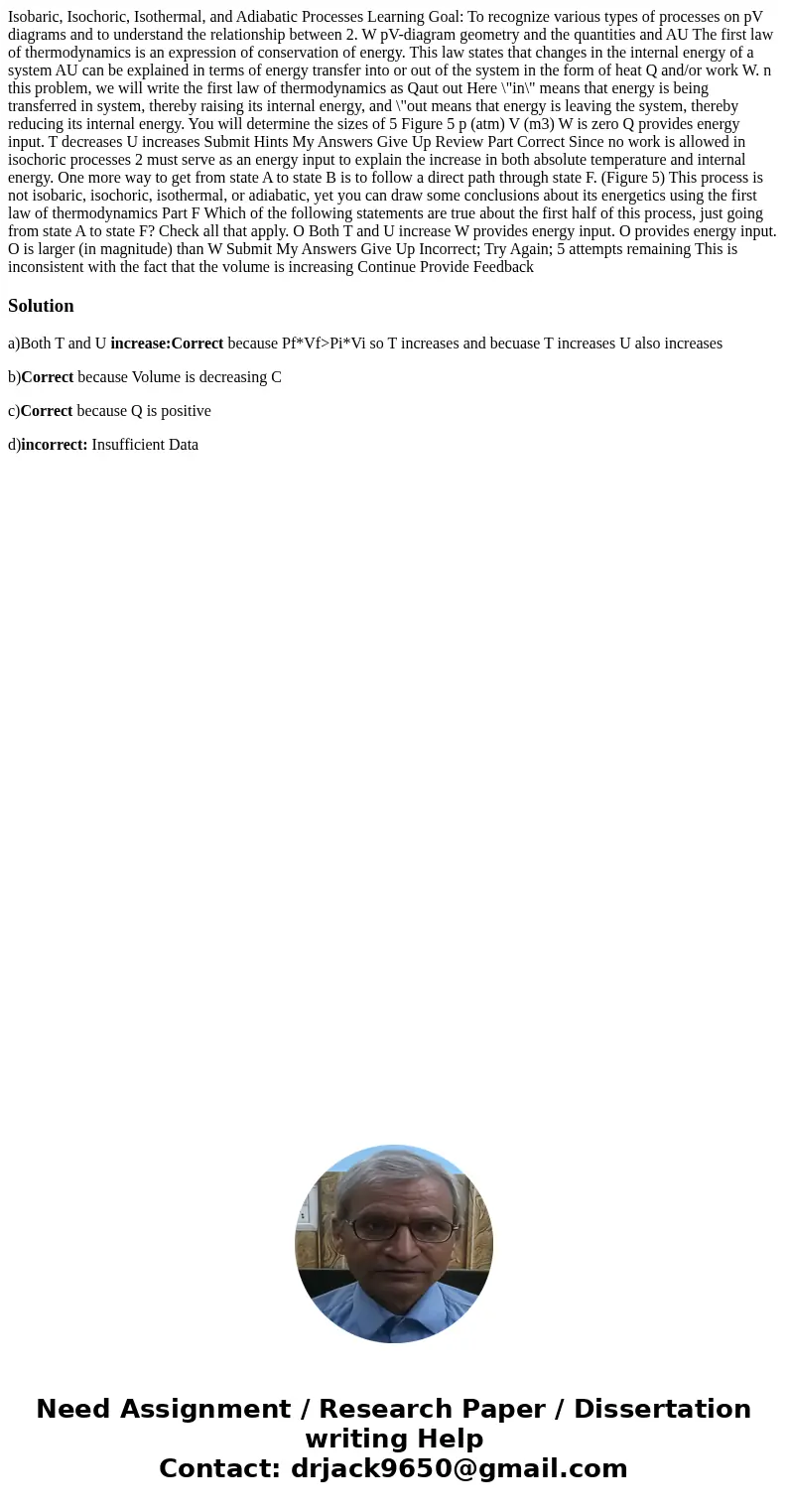Isobaric Isochoric Isothermal and Adiabatic Processes Learni
Isobaric, Isochoric, Isothermal, and Adiabatic Processes Learning Goal: To recognize various types of processes on pV diagrams and to understand the relationship between 2. W pV-diagram geometry and the quantities and AU The first law of thermodynamics is an expression of conservation of energy. This law states that changes in the internal energy of a system AU can be explained in terms of energy transfer into or out of the system in the form of heat Q and/or work W. n this problem, we will write the first law of thermodynamics as Qaut out Here \"in\" means that energy is being transferred in system, thereby raising its internal energy, and \"out means that energy is leaving the system, thereby reducing its internal energy. You will determine the sizes of 5 Figure 5 p (atm) V (m3) W is zero Q provides energy input. T decreases U increases Submit Hints My Answers Give Up Review Part Correct Since no work is allowed in isochoric processes 2 must serve as an energy input to explain the increase in both absolute temperature and internal energy. One more way to get from state A to state B is to follow a direct path through state F. (Figure 5) This process is not isobaric, isochoric, isothermal, or adiabatic, yet you can draw some conclusions about its energetics using the first law of thermodynamics Part F Which of the following statements are true about the first half of this process, just going from state A to state F? Check all that apply. O Both T and U increase W provides energy input. O provides energy input. O is larger (in magnitude) than W Submit My Answers Give Up Incorrect; Try Again; 5 attempts remaining This is inconsistent with the fact that the volume is increasing Continue Provide Feedback 
Solution
a)Both T and U increase:Correct because Pf*Vf>Pi*Vi so T increases and becuase T increases U also increases
b)Correct because Volume is decreasing C
c)Correct because Q is positive
d)incorrect: Insufficient Data

 Homework Sourse
Homework Sourse